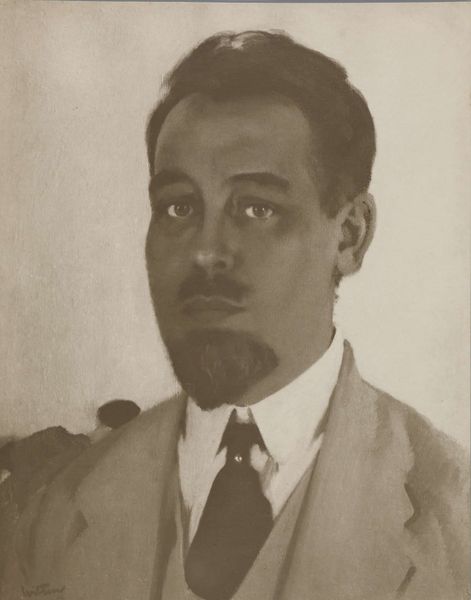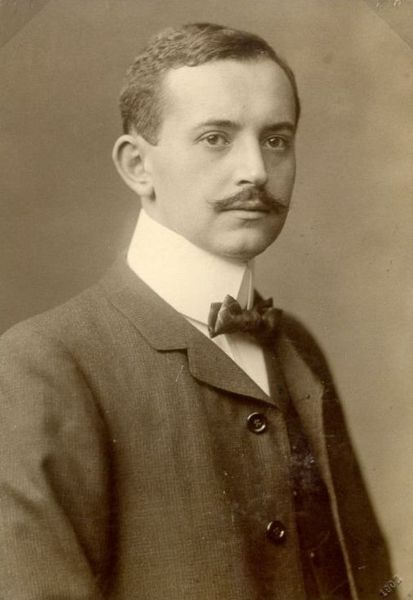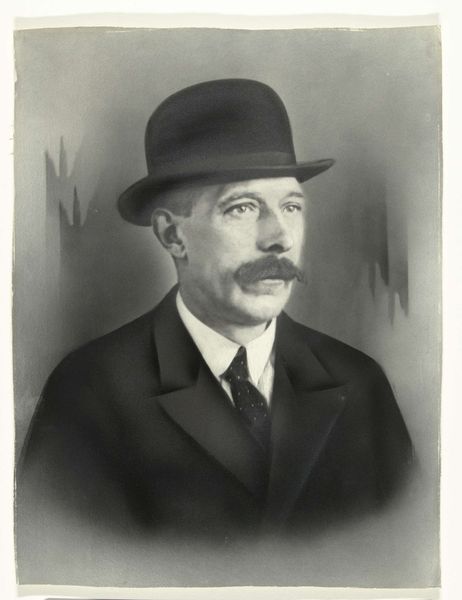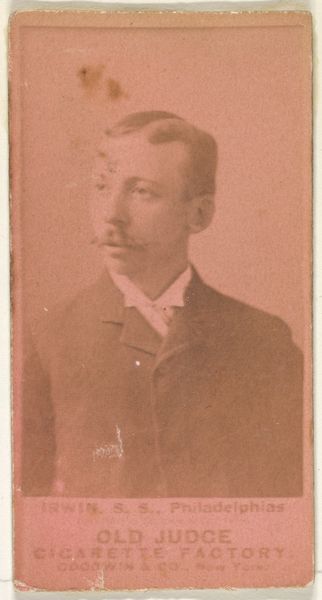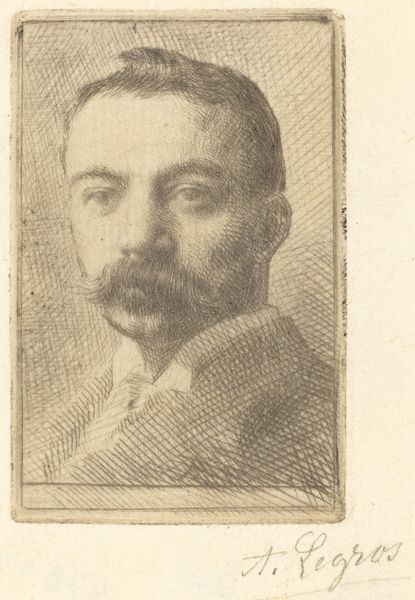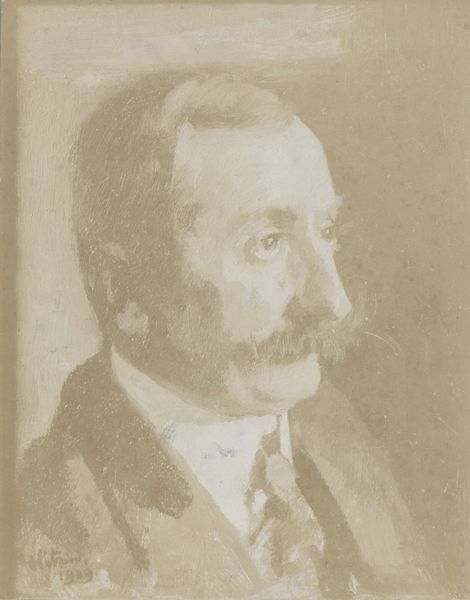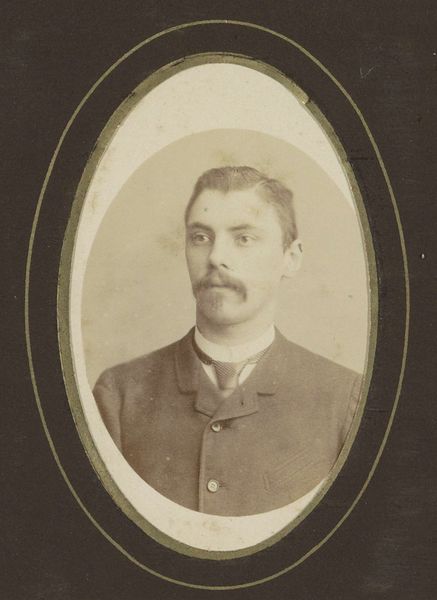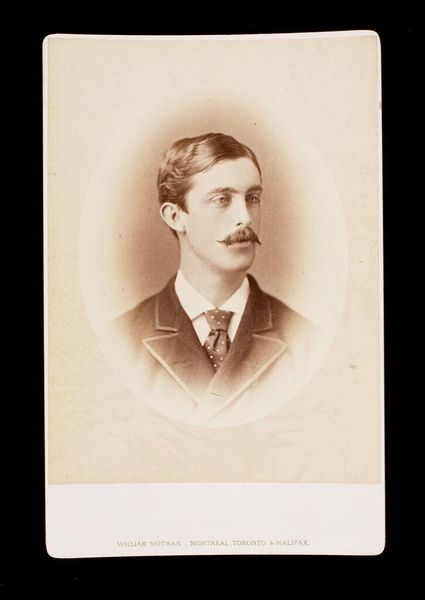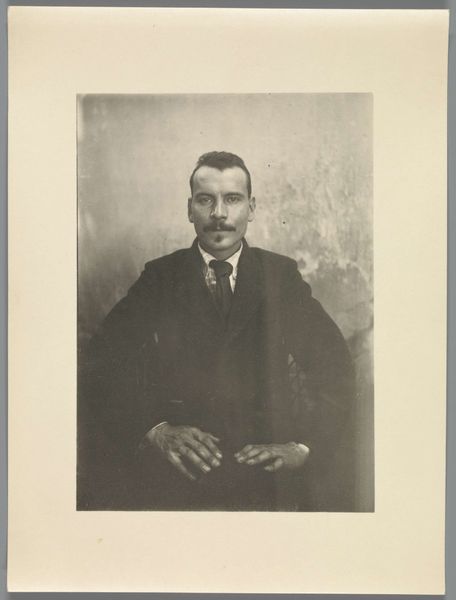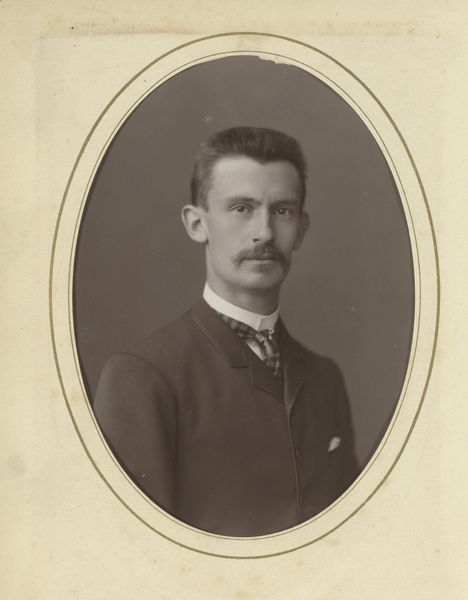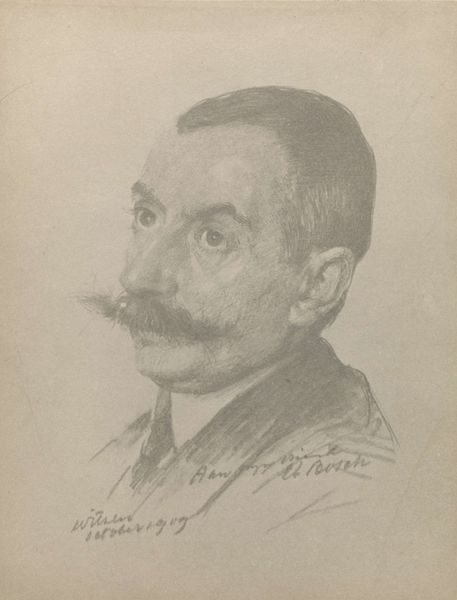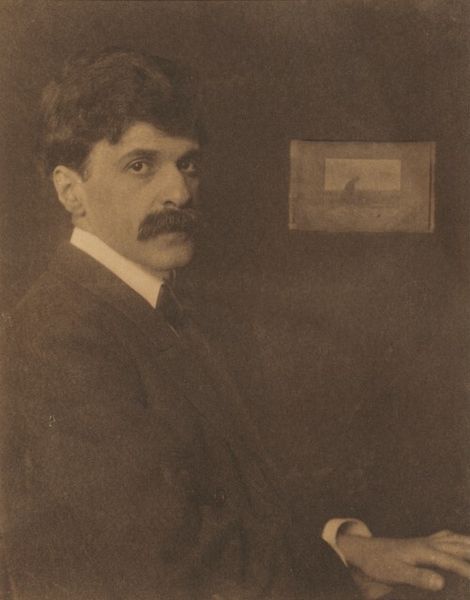
Reproductie naar schilderij van Willem Witsen van een portret van een man c. 1860 - 1915
0:00
0:00
anonymous
Rijksmuseum
painting, oil-paint
#
portrait
#
dutch-golden-age
#
painting
#
oil-paint
#
portrait drawing
#
genre-painting
#
facial portrait
#
realism
Dimensions: height 140 mm, width 109 mm
Copyright: Rijks Museum: Open Domain
Curator: Here we have "Reproductie naar schilderij van Willem Witsen van een portret van een man," dating roughly from 1860 to 1915. It’s an oil painting currently residing here at the Rijksmuseum. Editor: The immediate impact is striking—that subtle monochrome palette, a nuanced study in light and shadow, it lends the piece a distinct, almost photographic quality. The meticulous detail is captivating. Curator: Indeed. Witsen was very interested in the intersection of painting and photography, how one could mimic and augment the other. You see it in his choice of subject matter as well, moving away from grand historical themes, choosing instead portraiture typical of Dutch Golden age genre paintings, capturing an everyday person, elevated by the artist’s technical skill and the changing availability of artistic resources for mass markets. Editor: Absolutely, and speaking of elevation, observe the artist's use of the 'sfumato' effect, that smoky haziness blurring the lines. See how that softness grants the sitter a certain ethereal presence, transforming a common portrait into an icon? Curator: Considering the era in which this painting was rendered, with industrialization reshaping artistic production and the rise of artistic reproduction, this is not just about seeing but also about considering the production process. Here’s an appeal to craftsmanship during times of change, with manual labor creating new meaning in representing an individual. Editor: True, though beyond its commentary, what is conveyed by that composition is stillness, isn’t it? A contemplative moment frozen in time. The lack of dramatic color, instead those earth tones create an almost sepia like effect… Curator: The economic dimensions in which artistic choices are possible is a great area to explore here, right? The choice of this style, or those colors available, become part of a material language that can be translated culturally. Editor: That stillness does give you time to observe, appreciate his attention to form, but even more than the textures, it is about how that plays with emotions; in many ways the visual balance contributes to its haunting presence. Curator: In contemplating "Reproductie naar schilderij van Willem Witsen van een portret van een man," we have hopefully highlighted ways of considering the historical framework, the production methods, and cultural statements in dialogue. Editor: A dialogue, too, on the impact and structure and the way composition alone can affect a viewer on its own terms. I trust we've all come away with something new to consider.
Comments
No comments
Be the first to comment and join the conversation on the ultimate creative platform.
